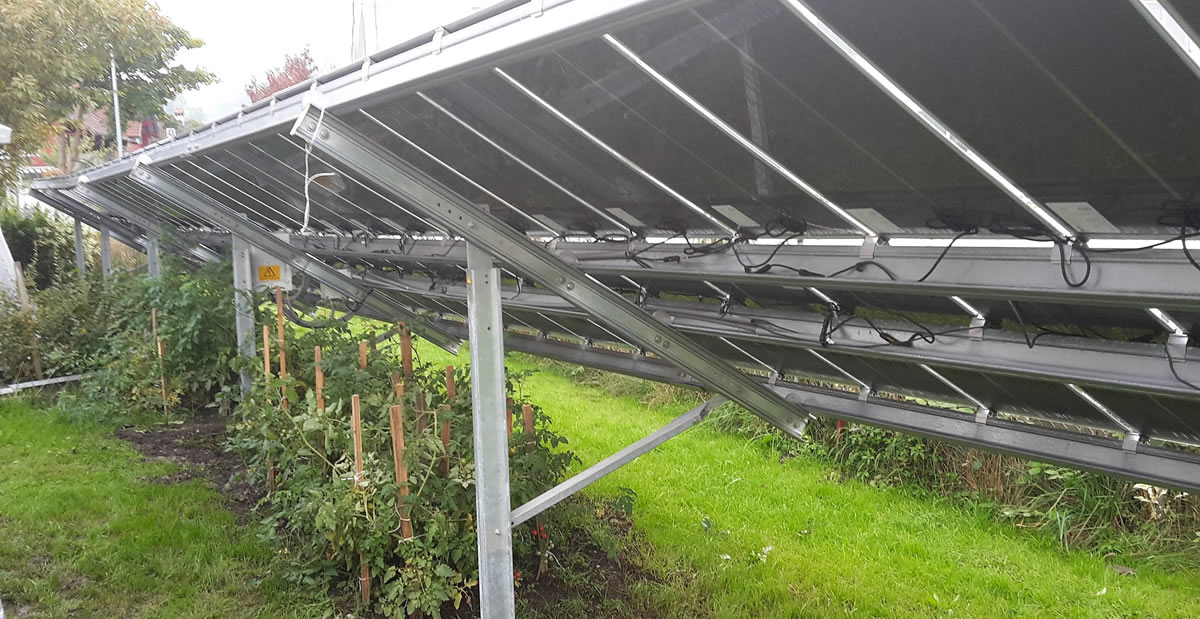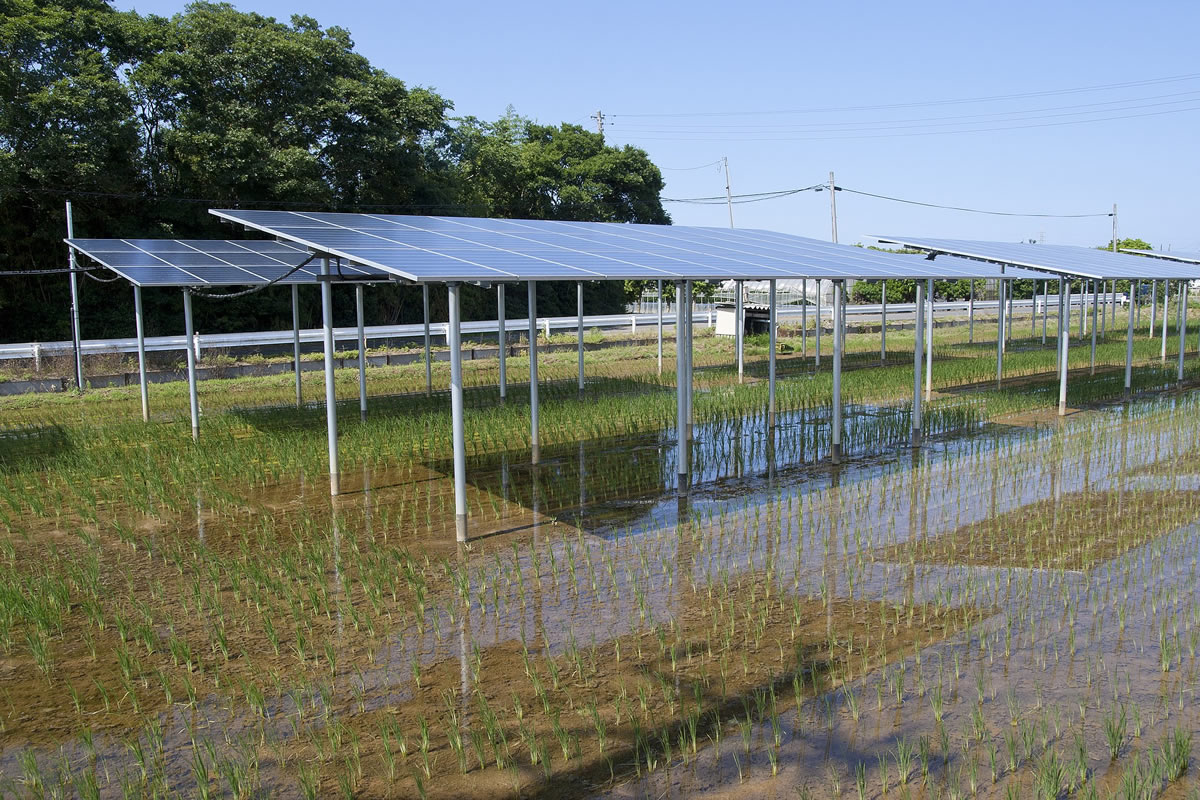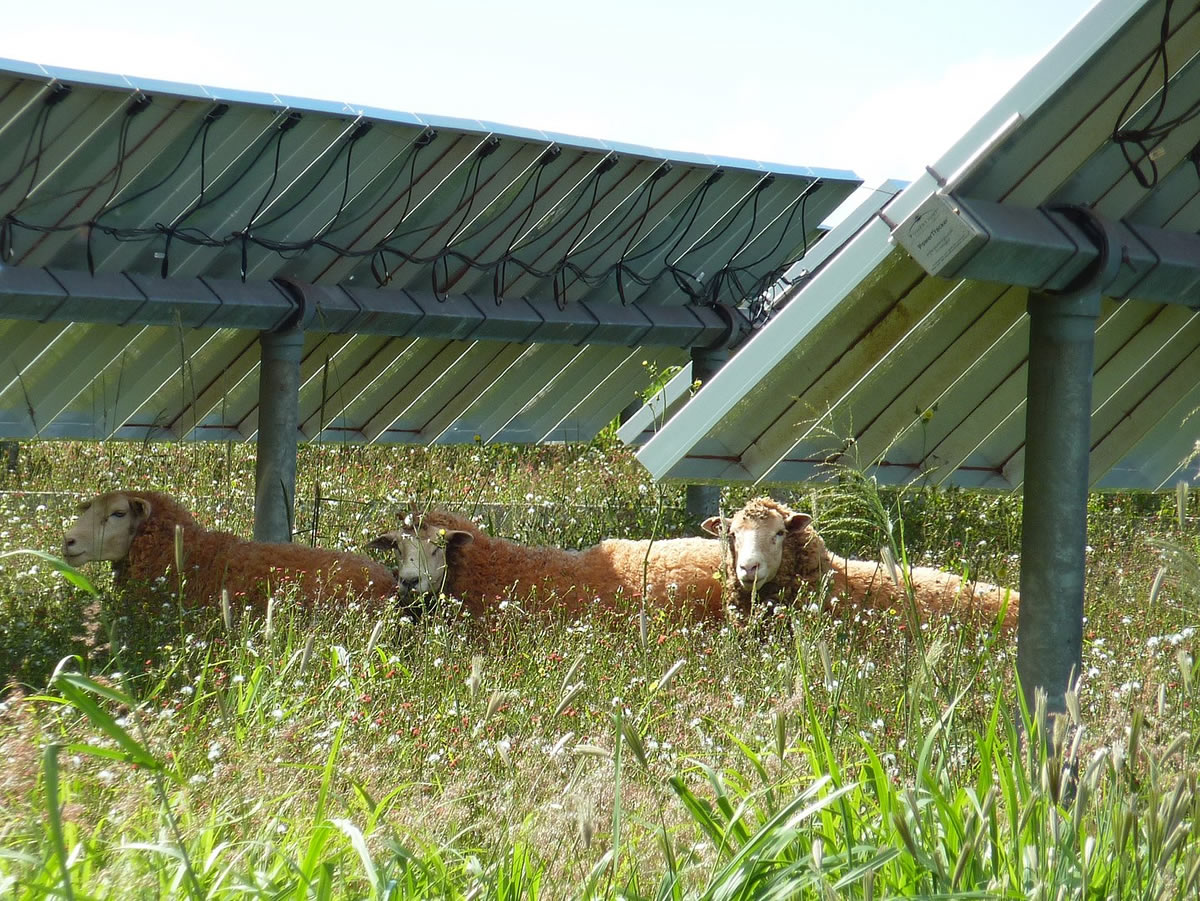As the price of solar panels continues to plummet and the number of PV installations increases, land use competition between agriculture and energy is heating up. The US Energy Information Administration estimates that if solar continues its current growth rate, that could require 6.5 million acres of land – an area about the size of Massachusetts – for PV production by 2050. That sounds like a lot of land, but the US currently uses about a third of that amount for golf courses alone. One solution is to develop dual-use installations where energy development and agriculture share the land, creating a nexus between food, energy and water.

One hope is that renewable energy can also benefit financially struggling farmers and help slow the disappearance of family farms. Some of the pilot projects underway are integrating PV arrays with food production, grazing for livestock, improved habitat for pollinators (both birds and bees), or all of the above. Another experimental approach to dual-use solar is floating PV panels, a strategy that reduces evaporation while conserving land. Pairing agriculture and solar might require adjustments to the height of ground-mounted solar systems, and the creation of spacing between groups of panels, but so far that hasn’t been an impediment to the development of dual-use systems.
European countries – which are more land-challenged than the US – have been experimenting with this technology, dubbed “agrivoltaics,” for over a decade. Now we see in the US that Massachusetts is emerging as a leader in research on dual-use solar installations. The University of Massachusetts is piloting several projects and the Massachusetts Department of Energy Resources (DOER) has a program that in addition to normal state incentives for grid-tied PV projects, provides a premium to farmers who can demonstrate agricultural production under PV arrays. Not surprisingly, research so far on vegetables shows that while slightly reduced production can occur in the shady areas under panels during rainy years, solar panels provide shade protection during hot, dry spells and increase yields. Meanwhile Asian countries are testing solar compatibility with rice paddies.

The University of Vermont is testing the production of high-priced saffron under solar panels and getting good results. And in North Carolina, solar developer Cyprus Creek Renewables is is testing grazing and bee keeping in conjunction with solar arrays. Australia is also testing the compatibility of solar arrays and grazing animals. In one US project, solar developers found that a flock of sheep allowed them to eliminate the annual expense of mowing under and around solar panels. Agrivoltaics innovators have discovered that sheep are the ideal companions for solar arrays; cows are too big and require higher, more expensive pole mounts, while goats are too tempted to climb on the arrays.

Another “win-win” business model that pairs clean energy development with sustainable agriculture features wildflowers instead of gravel beneath ground-mounted solar arrays. That attracts bees and birds, and replaces bee habitat that has been lost to housing or urban development. Over the past two decades, it’s estimated that over 10 million acres of pollinator habitat has been lost in the US. In 2016, Minnesota passed legislation requiring large solar developers to be “pollinator friendly,” a policy that has since been taken up in five additional states. Finally, a developer in the state of Colorado just recently completed the 1 MW “Solinator Garden,” a development that will contribute over 6% towards the City of Fort Collins’ local renewable energy goals for 2020.
HOMER software delivers industry-leading system simulations, optimization, sensitivity analysis and best-in-class storage models across three categories of hybrid systems: islanded microgrids, grid-connected distributed generation, and front-of-the-meter utility-scale storage and hybrid systems.
Learn More
Visit UL Solutions HOMER® software to learn more about HOMER Pro, HOMER Grid and HOMER Front modeling and optimization software, download complimentary trials, sign up for training and explore our extensive knowledge base and other support documents.
